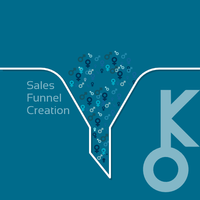Sales Funnel Troubleshooting
Sales funnel troubleshooting is the process of identifying and resolving issues or bottlenecks in a sales funnel to improve its efficiency and effectiveness. A sales funnel represents the journey that potential customers take from being aware of a product or service to making a purchase. It is divided into various stages, each with its own objectives and conversion goals.
Importance of Sales Funnel Troubleshooting
An optimized sales funnel is crucial for achieving successful conversions and maximizing revenue generation. However, even the most well-designed funnels can encounter problems that hinder their performance. This is where sales funnel troubleshooting becomes essential. By closely analyzing each stage of the funnel, identifying areas of improvement, and implementing targeted solutions, organizations can enhance their overall sales process.
Common Issues in Sales Funnels
- Low Conversion Rates: If your leads aren't converting into paying customers at an acceptable rate, it could indicate issues within your sales funnel. Potential causes include unclear messaging, ineffective call-to-actions (CTAs), or unconvincing offers.
- High Dropout Rates: Customers may abandon the purchasing process before reaching the final stage due to various reasons such as complicated checkout processes, excessive form fields, lack of trust signals, or slow loading times.
- Inadequate Lead Generation: Insufficient lead generation strategies can result in limited opportunities for nurturing leads through your sales funnel. Identifying gaps in lead generation efforts helps improve top-of-funnel activities such as content marketing or paid advertising.
- Lack of Personalization: Failure to address individual customer needs throughout the buying journey hampers engagement levels and affects conversions adversely.
- Misalignment between Marketing and Sales Teams: Poor collaboration between departments can disrupt smooth transitions between different stages of the sales funnel.
Steps for Sales Funnel Troubleshooting
Analyzing Metrics:
Start by gathering relevant data on key metrics such as conversion rates, bounce rates, email open rates, and click-through rates. This analysis provides valuable insights into the pain points and shortcomings of your sales funnel.
Identifying Bottlenecks:
Examine each stage of your sales funnel to pinpoint specific areas where drop-offs or bottlenecks occur. Look for any inconsistencies in messaging, design flaws, or friction points that could impede the progression of leads.
Optimizing Messaging:
Evaluate the clarity and effectiveness of your messaging at each stage of the funnel. Ensure that it aligns with customer needs and addresses potential objections effectively.
Streamlining User Experience:
Identify any barriers or obstacles within your sales funnel that may negatively impact user experience. Simplify forms, reduce page load times, remove unnecessary steps from checkout processes, and implement trust signals to build credibility.
Implementing A/B Testing:
Experiment with different variations of landing pages, CTAs, emails, and offers to optimize their performance based on real-time data-driven feedback.
Aligning Marketing and Sales Teams:
Foster collaboration between marketing and sales teams through regular communication and shared goals to ensure a seamless transition between stages in the funnel.
Nurturing Leads:
Develop effective lead nurturing strategies such as personalized follow-up emails or retargeting ads to engage potential customers who have shown interest but haven't converted yet.
Continuous Monitoring:
Regularly track key metrics while implementing changes throughout your sales funnel troubleshooting process to measure improvements over time.
By following these steps and continually monitoring and refining your approach, you can identify and address issues within your sales funnel to achieve better outcomes in terms of conversion rates, customer engagement levels, and overall revenue generation.
















